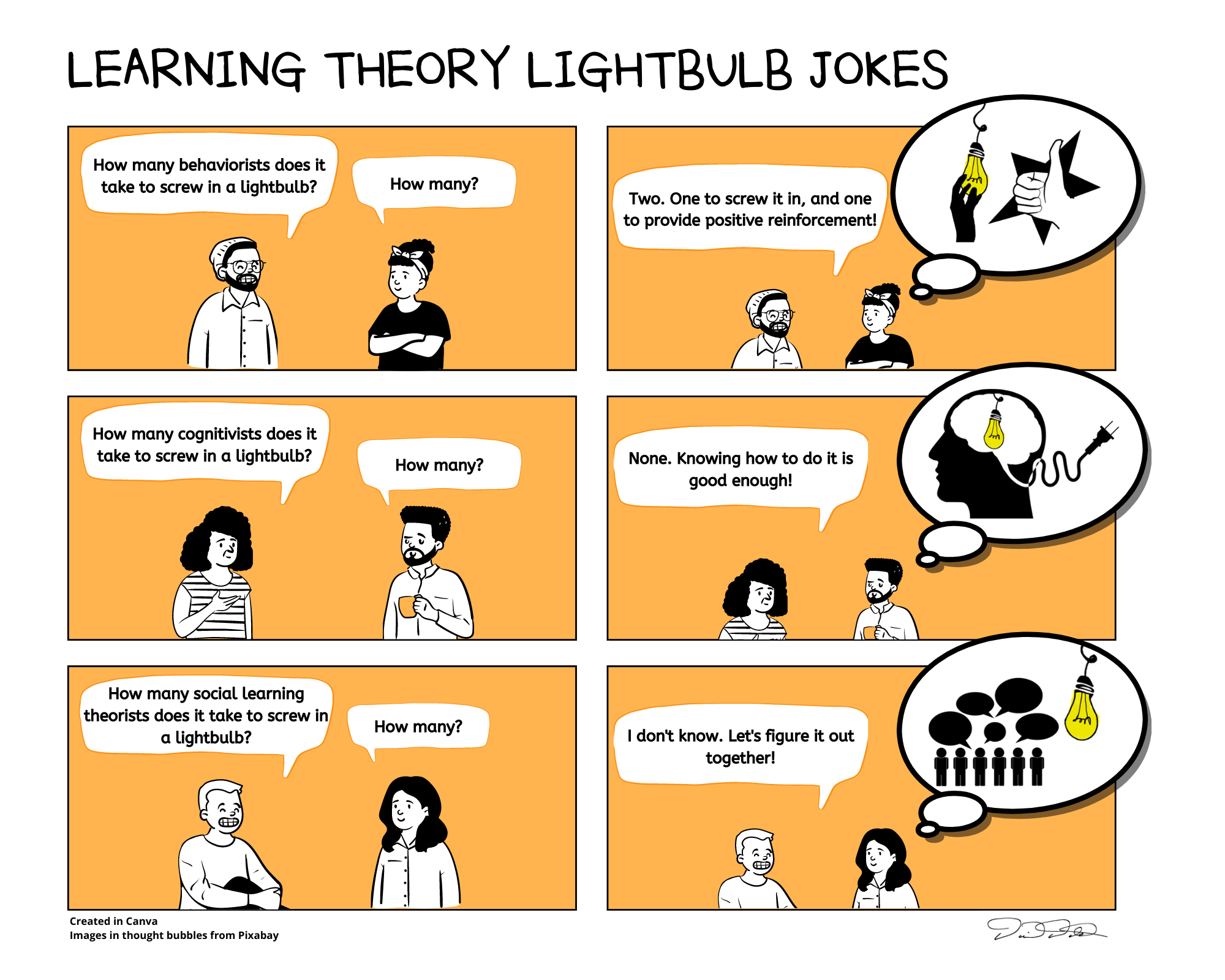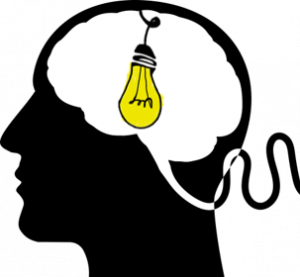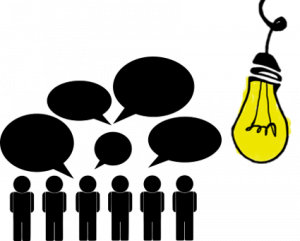David Patent – IDE 621 – Principles of Instruction and Learning – Fall 2020
Learning and Instructional Design Theories

How do the theories relate?

What is learning? How do we know that learning has occurred? Lightbulb jokes aside, these are the serious questions that learning theorists – whether behaviorist, cognitivist, social learning – concern themselves with. At the heart of these theories is the activity of learning. If the lightbulb is a symbol of invention, intelligence, and creativity, then screwing it in is a metaphor for the activity that makes it all possible!
Contents
Explore the knowledge base to learn about the similarities and differences between these theories, key terms and concepts, and some of the instructional design theories that have emerged from them.
| Behaviorism | Cognitive Theory | Social Learning Theory | |
|---|---|---|---|
| Learning is... | a change in behavior. | a change in cognitive structure. | construction of socially acceptable behavior. |
| Learning involves... | reinforcing relationships between stimuli and desired responses. | information processing, from reception to storage to retrieval. | shared control between behavior, the environment, and perceptions. |
| Theorists include... | Ivan Pavlov, Edward Thorndike, and B. F. Skinner. | Gestalt psychologists, Jean Piaget, and Lev Vygotsky. | Albert Bandura, John Dollard, and Neal Miller. |
| Core concepts include... | equipotentiality, stimuli and responses, conditioning, and reinforcement. | information processing, the dual store model, and assimilation and accommodation. | reciprocal causation, modeling, self-efficacy, and self-regulation. |
| Significant instructional theories are... | Mastery Learning, Programmed Instruction, and Criterion-Referenced Instruction. | Advance Organizers, Meaningful Reception, and the 9 Events of Instruction. | Collaborative Learning, Reciprocal Teaching, and Apprenticeship. |



